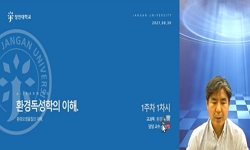<P><B>Abstract</B></P> <P>A comprehensive ecotoxicological evaluation of a sulfamethazine (SMZ) and sulfamethoxazole (SMX) mixture was conducted using an indicator microalga, <I>Scenedesmus obliquus</I>. The ...
http://chineseinput.net/에서 pinyin(병음)방식으로 중국어를 변환할 수 있습니다.
변환된 중국어를 복사하여 사용하시면 됩니다.
- 中文 을 입력하시려면 zhongwen을 입력하시고 space를누르시면됩니다.
- 北京 을 입력하시려면 beijing을 입력하시고 space를 누르시면 됩니다.



Toxicity of sulfamethazine and sulfamethoxazole and their removal by a green microalga, <i>Scenedesmus obliquus</i>
한글로보기https://www.riss.kr/link?id=A107427246
- 저자
- 발행기관
- 학술지명
-
권호사항
-
-
발행연도
2019
-
작성언어
-
- 주제어
-
등재정보
SCI,SCIE,SCOPUS
-
자료형태
학술저널
-
수록면
551-558(8쪽)
- 제공처
-
0
상세조회 -
0
다운로드
부가정보
다국어 초록 (Multilingual Abstract)
<P><B>Abstract</B></P> <P>A comprehensive ecotoxicological evaluation of a sulfamethazine (SMZ) and sulfamethoxazole (SMX) mixture was conducted using an indicator microalga, <I>Scenedesmus obliquus</I>. The toxicological effects of this mixture were studied using microalgal growth patterns, biochemical characteristics (total chlorophyll, carotenoid, carbohydrate, fatty acid methyl ester), and elemental and Fourier-transform infrared spectroscopy analyses. The 96-h half maximal effective concentration (EC<SUB>50</SUB>) of the SMZ and SMX mixture was calculated to be 0.15 mg L<SUP>−1</SUP> according to the dose-response curves obtained. The chlorophyll content decreased with elevated SMZ and SMX concentrations, while the carotenoid content initially increased and then decreased as concentration raised. The unsaturated fatty acid methyl esters (FAMEs) content was enhanced with higher SMZ and SMX concentrations, while that of saturated FAMEs simultaneously decreased due to SMZ and SMX stress. Elemental analyses showed an improved percentage of nitrogen and sulfur in the microalgal biomass as SMZ and SMX concentrations increased. The microalga <I>S. obliquus</I> was shown to biodegrade the chemicals tested and removed 31.4–62.3% of the 0.025–0.25 mg SMZ L<SUP>−1</SUP> and 27.7–46.8% of the 0.025–0.25 mg SMX L<SUP>−1</SUP> in the mixture after 12 days of cultivation. The greater biodegradation observed at higher SMZ and SMX concentrations indicates that microalgal degradation of SMZ and SMX could act as an efficient adaptive mechanism to antibiotics.</P> <P><B>Highlights</B></P> <P> <UL> <LI> <I>S. obliquus</I> can withstand high doses of SMZ and SMX. </LI> <LI> EC<SUB>50</SUB> of SMZ, SMX and their mixture for <I>S. obliquus</I> was 1.23, 0.12, and 0.15 mg L<SUP>−1</SUP>. </LI> <LI> <I>S. obliquus</I> removed 62.3 and 46.8% of SMZ and SMX, respectively. </LI> <LI> A greater biodegradation was observed in higher SMZ and SMX concentration. </LI> </UL> </P>




 ScienceON
ScienceON


